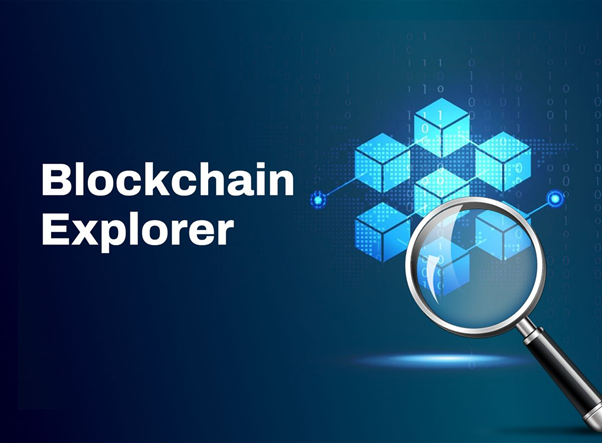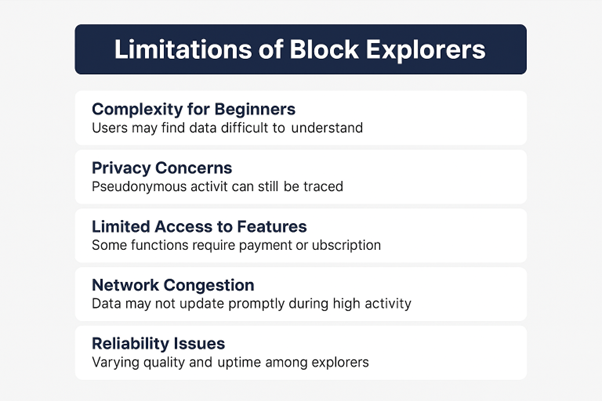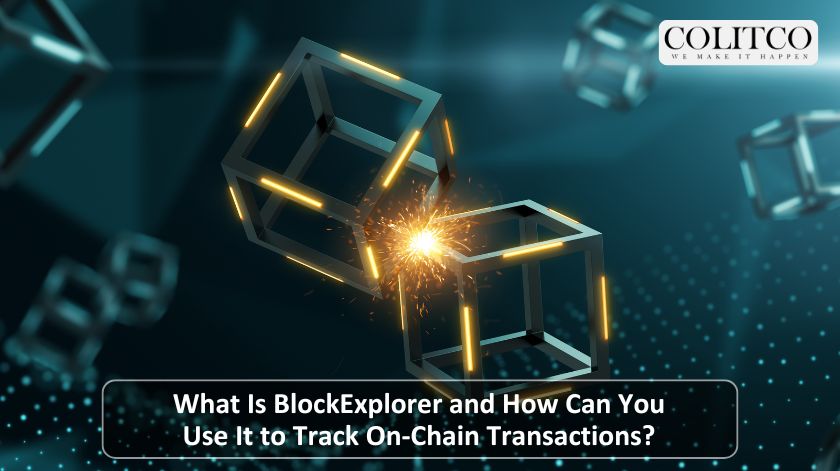Blockexplorers are the eyes of transparency in blockchain. These tools provide a view of blockchain activity in real time. With cryptocurrencies and smart contracts going mainstream, transaction tracking has never been so crucial.
What exactly is a block explorer?
A block explorer is a public, web-based utility that allows users to monitor activity on a blockchain. This would be much the same as looking up transaction IDs, wallet addresses, block numbers, gas fees, and timestamps. Each blockchain has its own explorer. For example, Bitcoin has Blockchain.com, while Ethereum has the Etherscan.
Block explorers serve as the search engines for blockchain data and greatly aid in transaction verification and wallet balance checks.

Block Explorer- A web tool to view blockchain transactions.
How do you track a transaction using a block explorer?
First, go ahead and copy your TXID. Then paste it into the explorer’s search bar. It would then display the transaction status, confirmations, fee paid, and the involved addresses.
If the TXID is not known to you, you can perform a search by entering a wallet address. The explorer would list all transactions related to that address. You’d also be able to find inbound and outbound amounts with a status provided in real-time. Well-known block explorers include:
- Etherscan for Ethereum
- BSCScan for Binance Smart Chain
- com for Bitcoin
- Solscan for Solana
Each of these is specific to one chain but retains similar core functions.
Why are block explorers essential for investors?
Due diligence is a must for retail and institutional investors. Block explorers provide real-time transaction verification for users to track wallets, audit smart contracts, and analyse on-chain fund movements. Investors make these tools work for tracking token allocations, following the activities of a project developer’s wallet, or the transfer of funds through decentralised exchanges. Whale watchers of Ethereum, for example, use Etherscan to watch for top holders and hopefully predict price movements or announcements by projects.
Block explorers improve trust and transparency in blockchain
Transparency is one of the promised blockchain features. Block explorers fulfil this promise. Everything that has been recorded on-chain can be looked up by anybody. There is no need for a middle party to verify matters.
Fewies check a DeFi transaction for progress or staking for rewards; explorers make it easy. Such access builds trust among users, developers, and regulators.
Many explorers now also provide the features of NFT tracking, token analytics, and smart contract source codes. These features enhance due diligence efforts within the DeFi, GameFi, and NFT ecosystems.
What are the limitations of block explorers?
Despite this power, block explorers have limitations. For starters, they may feel complicated for a beginner to grasp, with the data being raw and technical most of the time. A simple Ethereum transaction may display gas limits, input data, and contract calls, completely bewildering a first-time user.
Privacy is another issue. While one wants to admit that such wallets offer a degree of pseudonymity, repeated activity does throw this premise into question. This debate feeds into the larger landscape of blockchain surveillance.
Some explorers block features unless you pay higher-tier subscription fees for advanced analytics, whereas others may not keep their systems updated in real-time during network congestion. Always use explorers that have a good reputation as well as uptime to go with it.

Common block explorer limitations explained visually.
Can you rely on explorers for investment decisions?
While block explorers are very useful tools, one should never replace their fundamental or technical analysis and investment decisions with them. They may confirm the truth behind a transaction claim, follow token flows, or track project activity.
But they do not provide off-chain information, such as details about the team, roadmaps, and tokenomics. For instance, an unusually high level of on-chain activity may be lame or misleading if it’s generated by bots or wash trading.
Hence, to put together the full story, an investor would have to combine the information from the explorer with reviews of the whitepaper, social sentiment, and overall market trends. Many fund managers currently use explorer API integrations in dashboards to observe token health metrics whilst effectively hedging their risk exposure.
Also Read: Blockchain’s Journey: From 1990s Timestamps to Global Digital Infrastructure
Investor Outlook
The global blockchain analytics market is growing fast. Valued at USD 802 million in 2022, it’s forecast to reach USD 8.9 billion at a CAGR of 27.4% by 2032.
As of 2025, 432 million-plus crypto wallets exist in the world. According to Chainalysis, 20%+ of these wallets are active users of explorers every month.
Top-rated explorer platforms such as Etherscan and Blockchain.com report unique monthly visits of over 70 million. The rise in these numbers is an indication of growing investor dependence on transparent, on-chain verification.
Institutional investors are also integrating explorer APIs with real-time dashboards. These track wallet flows, DeFi positions, and asset concentration risks.
With Ethereum’s transition to proof-of-stake and more Layer-2 chains emerging, explorer tools will become even more critical.












